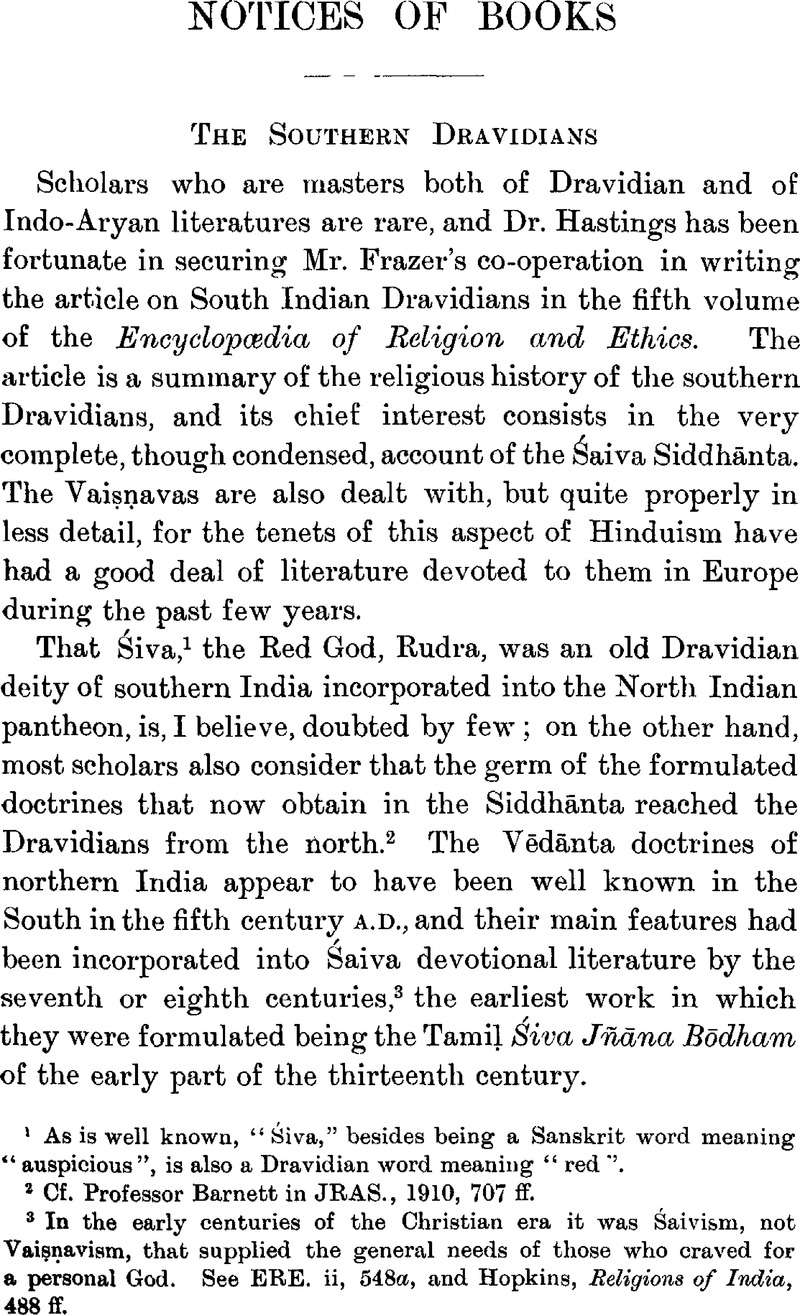No CrossRef data available.
Article contents
The Southern Dravidians
Published online by Cambridge University Press: 15 March 2011
Abstract

- Type
- Notices of Books
- Information
- Copyright
- Copyright © The Royal Asiatic Society 1913
References
page 173 note 1 As is well known, “Śiva,” besides being a Sanskrit word meaning “auspicious”, is also a Dravidian word meaning “red”.
page 173 note 2 Cf. Professor Barnett in JRAS., 1910, 707 ff.
page 173 note 3 In the early centuries of the Christian era it was Śaivism, not Vaiṣṇavism, that supplied the general needs of those who craved for a personal God. See ERE. ii, 548a, and Hopkins, , Religions of India, 488 ff.Google Scholar
page 174 note 1 So the Tattuva-Kaṭṭaḷei (JAOS. iv, 13). In the fifth tattva knowledge (jñāna) predominates (18). Hence Mr. Frazer designates this tattva as “pure knowledge”.
page 174 note 2 Hoisington's valuable series of articles on the Śaiva āgamas commence in the second volume of the JAOS. (1851).
page 175 note 1 Can the fact of the close etymological connexion between “Dakṣa” and dakṣiṇa, “the South,” have any bearing on the point? Dakṣa, whose daughter was Śiva's first wife and also the first “suttee”, was destroyed and revivified by him. The second father-in-law was the Himālaya, while the second wife's name was Umā, a word of which the Aryan etymology is at least doubtful.




